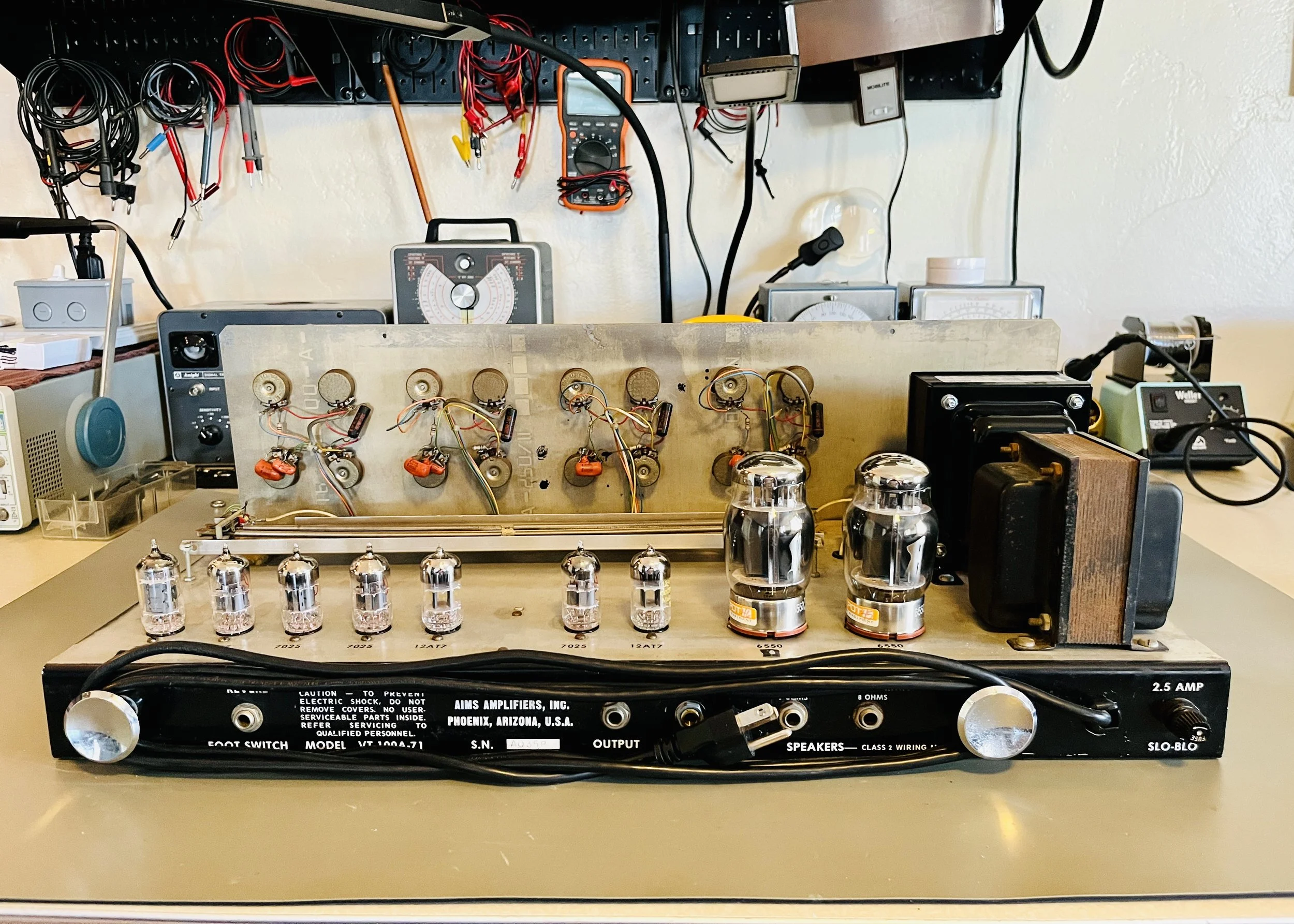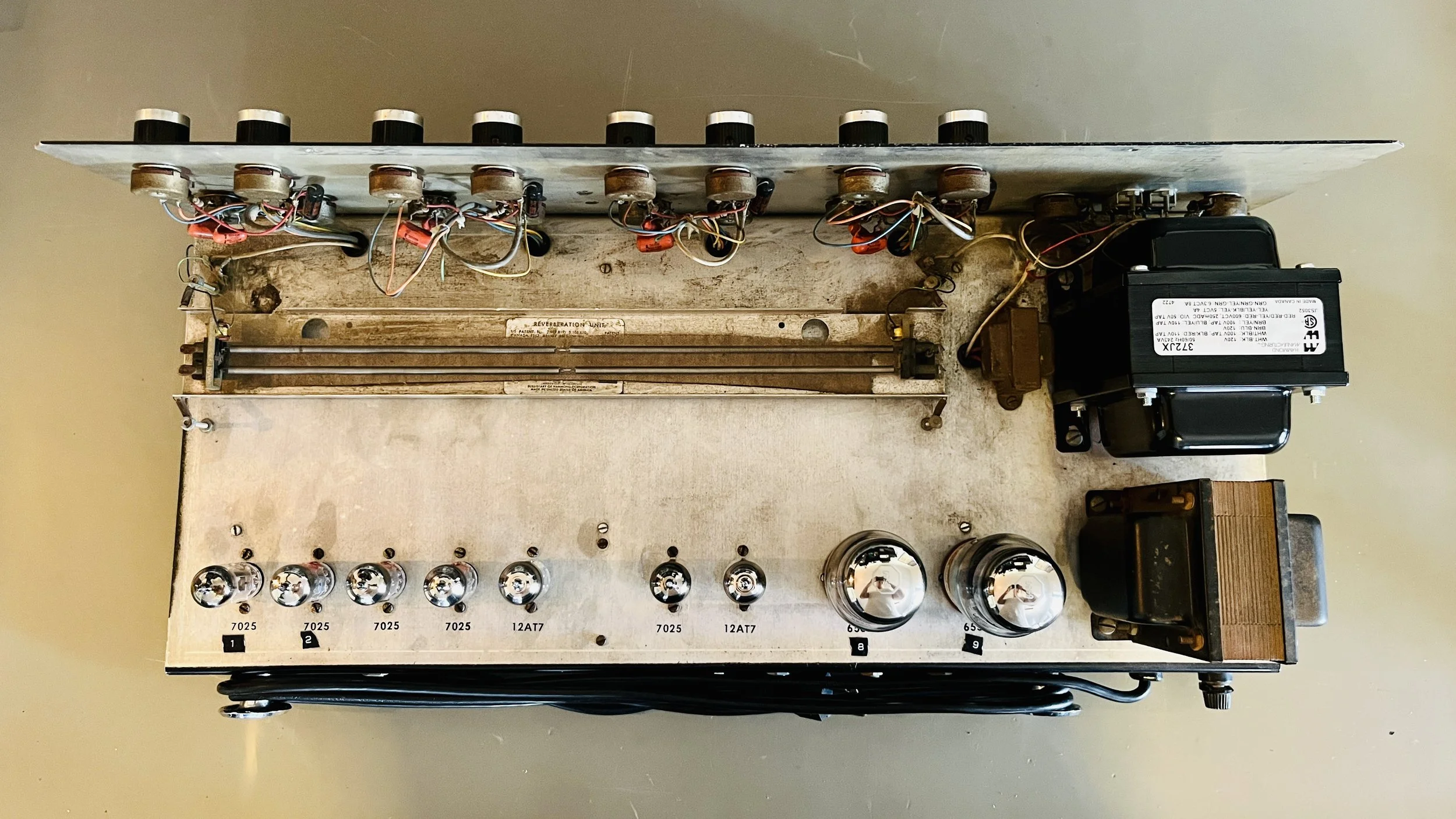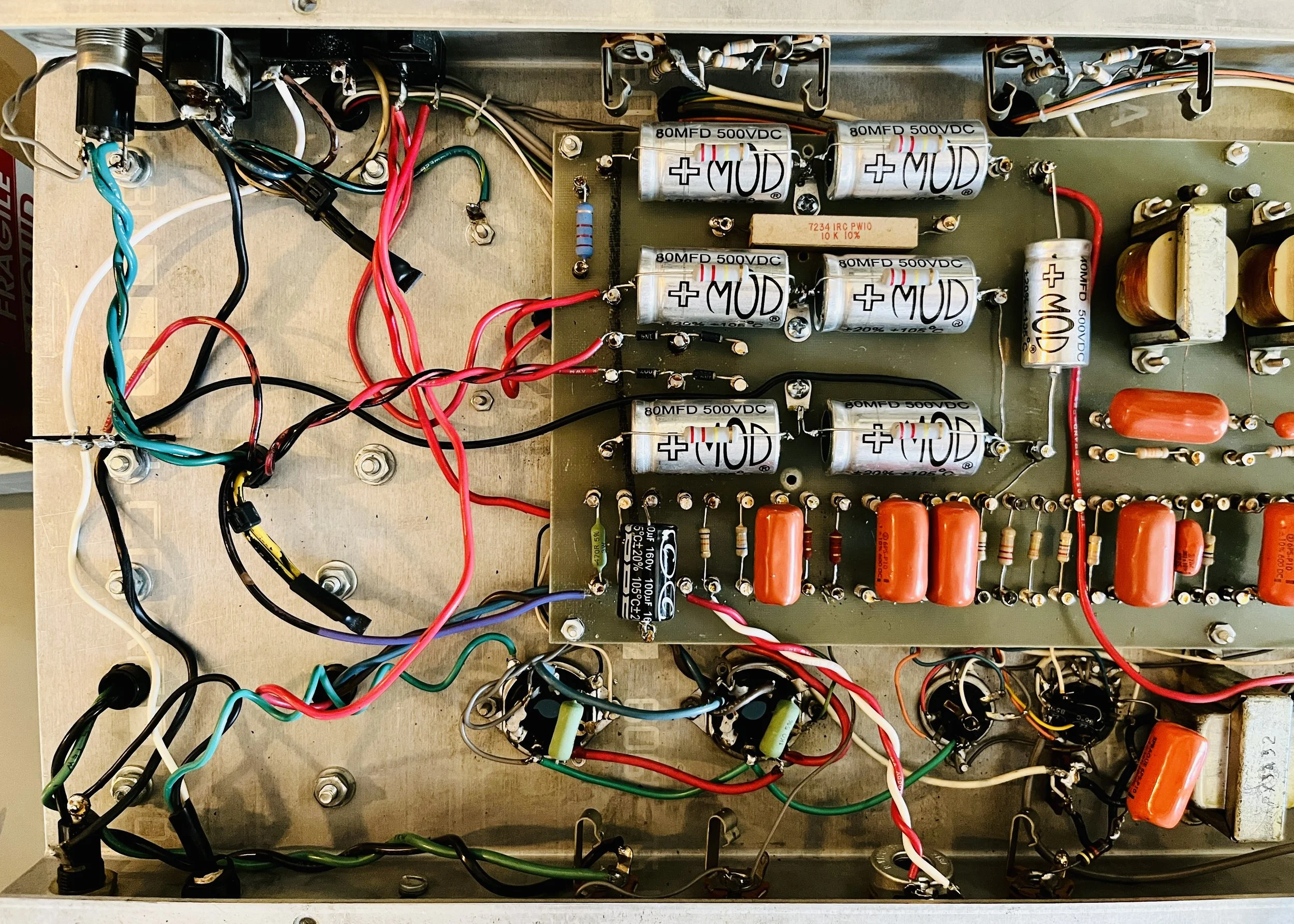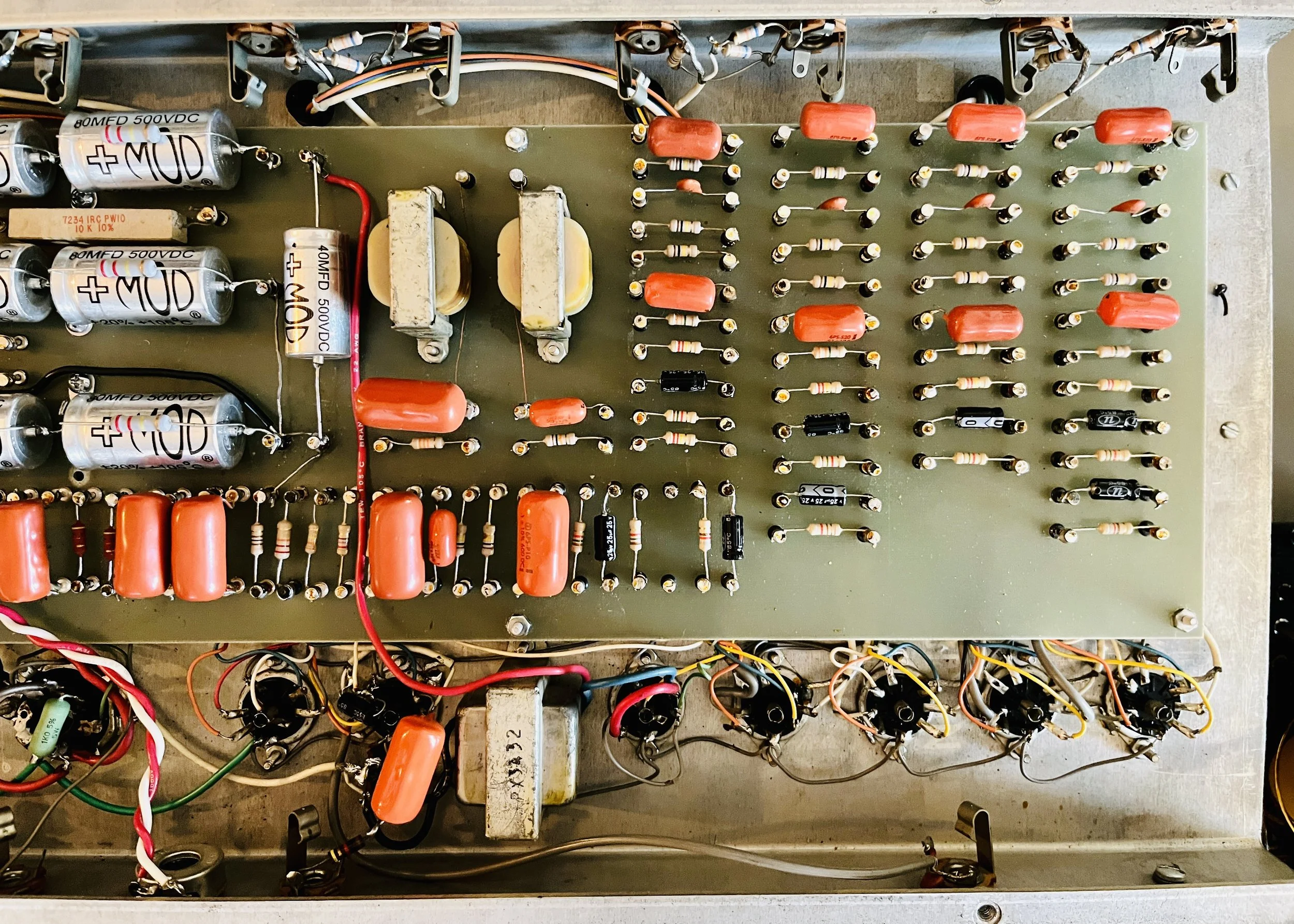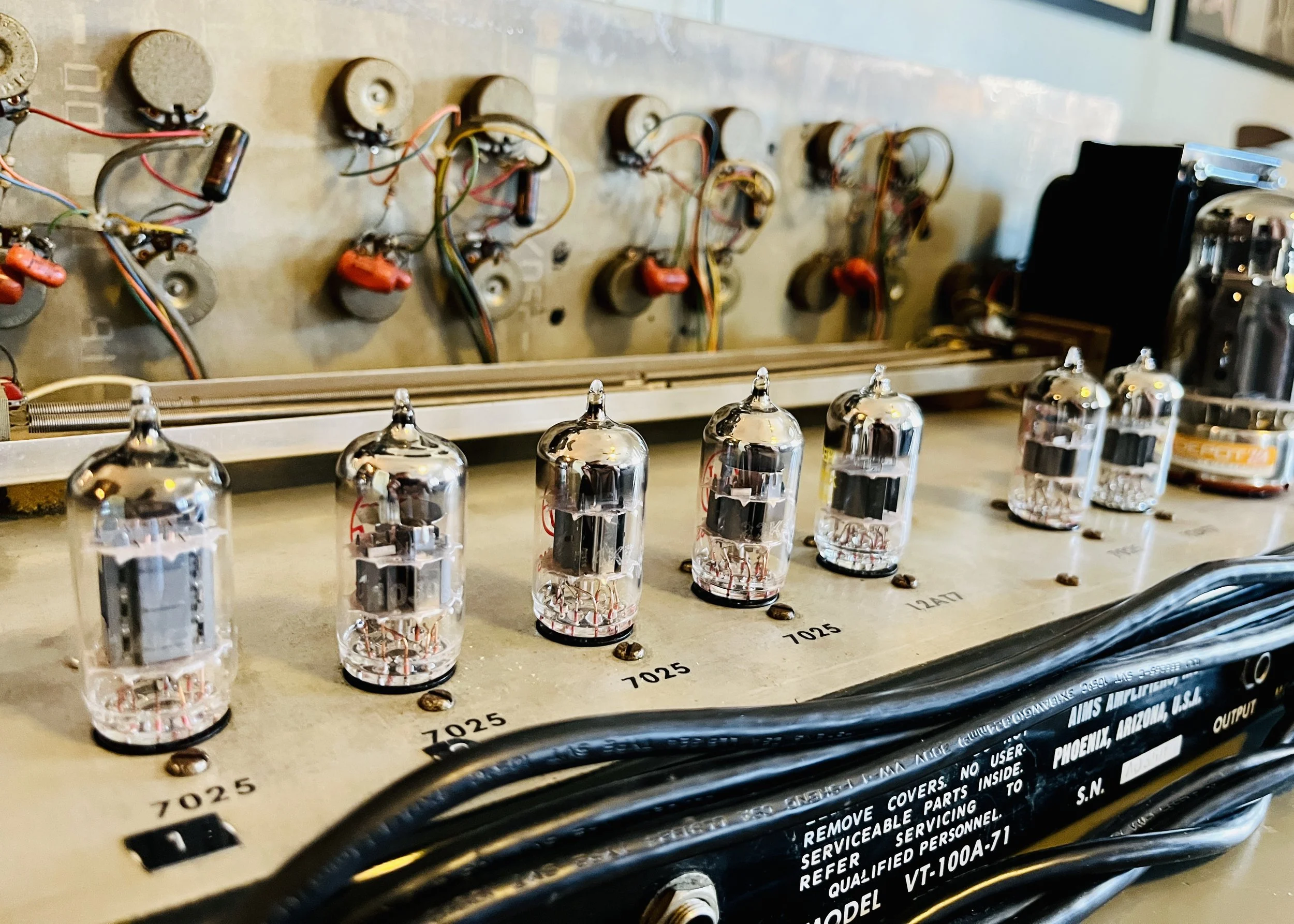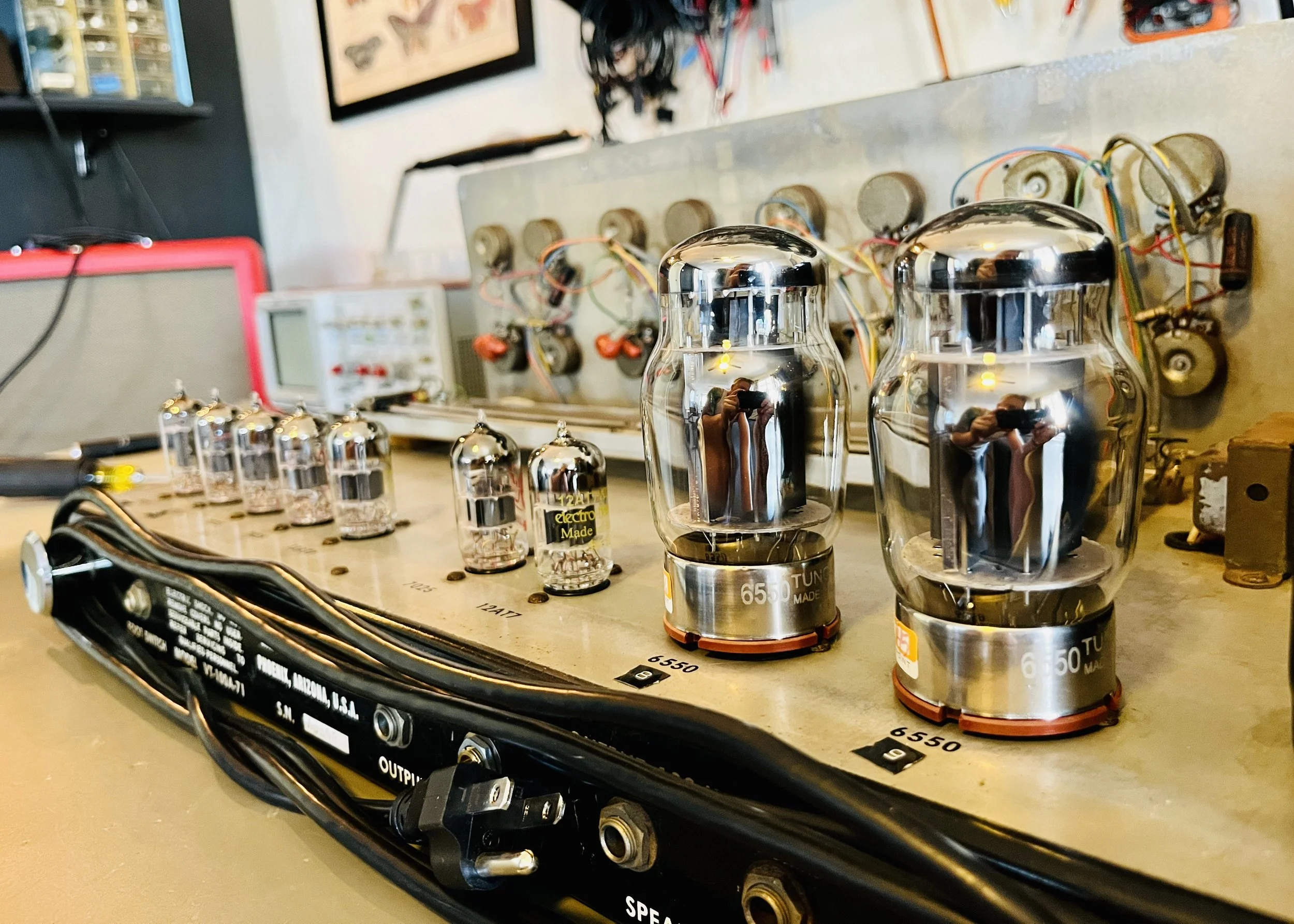1971 AIms vt-100
The AIMS company (American International Music Sales) was founded in the early 1970’s in Scottsdale, AZ by former Fender employees who had become dissatisfied by the drop in quality of Fender amps after the CBS buyout. These builders, engineers, and executives wanted AIMS amplifiers to be built to the highest quality, no expense spared - they even gave them a lifetime warrantee, which later on would bring the company into financial trouble. After AIMS started struggling in the late 70’s the company was overhauled and turned into the famous Randall brand out of Southern California. These are very cool amps that were made right here in Arizona!
The VT-100 is actually an all-tube PA amplifier that was marketed at bands looking to amplify their vocals and mic signals - hence the “Vocal Sound System” printed on the front. Despite the marketing and name, it is really just a fairly conventional guitar/bass amp circuit and has little to do with traditional circuit design for microphones/PA systems - at least the low-impedance input modern PA systems we think of today. Marshall, Fender, and Sound City amongst others, all made amps like these that were essentially multi-channel versions of their most popular guitar amps. These amps sound great with guitar, bass, and electric keyboards/synths. Ironically vocals are the thing they work the least well with (for live playing anyways) although they hold their own in a recording context. The whole design is actually closest to the 1970’s Fender Twin Reverb (CBS 100 Watt). It has 4 separate but identical preamps (each with their own tone and reverb controls) that get mixed down into a mono power amp. The preamp utilizes five 12AX7’s, and two 12AT7’s, with a Fender style tube driven Spring Reverb, high impedance inputs, and Baxandall tone stacks. These tone stacks are from the Hi-Fi world of audio engineering and are quite different from the FMV (Fender, Marshall, Vox) tone stacks that most guitarists are familiar with. They have a flatter frequency response at mid level but are far more versatile for an amp designed for multiple instruments and vocals. The Baxandall tone stack can also be found in almost all Ampeg amps including the V4, B15, and SVT. The power amp sports two 6550 power tubes putting out 100 watts RMS. This power amp is the other main difference from the Fender Twin similarity - 6550’s are massive power tubes with 40% more power than a 6L6GC at 42 watts max plate dissipation. This makes the amp sound more like an Ampeg or Hiwatt once it starts pushing hard.
This one came in needing a standard restoration having had very little work done to it. It had a failing Power Transformer, leaking Filter Caps, out of spec/heat damaged Power Resistors, and bad Tubes. The PT was replaced with a Hammond P-T372JX which fit the overall specs and the physical space available - it resulted in a slightly lower plate voltage than the original which put it more in line with the AB568 Twin Reverb. All filter/bias/bypass caps were replaced with upgraded voltage and temperature rated MOD and CE brand electrolytic’s. New 2 Watt Metal Oxide and 5 Watt Cement power dropping/screen resistors were installed for better reliability. The cathode resistor for V7 was replaced with a 1 Watt Carbon Film type unit due to heat damage. The plate resistors for the Phase Inverter were replaced with 2 Watt Reduced Mass Metal Film type units for the same reason. The original Fixed Bias circuit did not provide any way to adjust itself, so the practically unusable Monitor jack (basically a 3rd speaker jack) was taken out and a 10K pot was installed along with associated wiring to make the amp Adjustable Fixed Bias. A new 3 Prong AC cord was installed to replace the original unit present.
The original tubes did not test good and were all replaced. V1 = JJ ECC803 GOLD, V2 = JJ E83CC, V3 = JJ 12AX7MG, V4/V6 = JJ 12AX7S, V5/V7 = EHX 12AT7WC, V8-V9 = Tungsol 6550 Matched Pair. These tubes were picked for best tone, and reliability. The 6550’s Fixed Bias was set to a conservative %50 Class AB Plate Dissipation with a B+ of 410VDC. The tube sockets were all re-tensioned and were then treated with De-Oxit to remove/prevent corrosion. The pots were sprayed out and the amp was cleaned inside and out. Amp now functions well.


